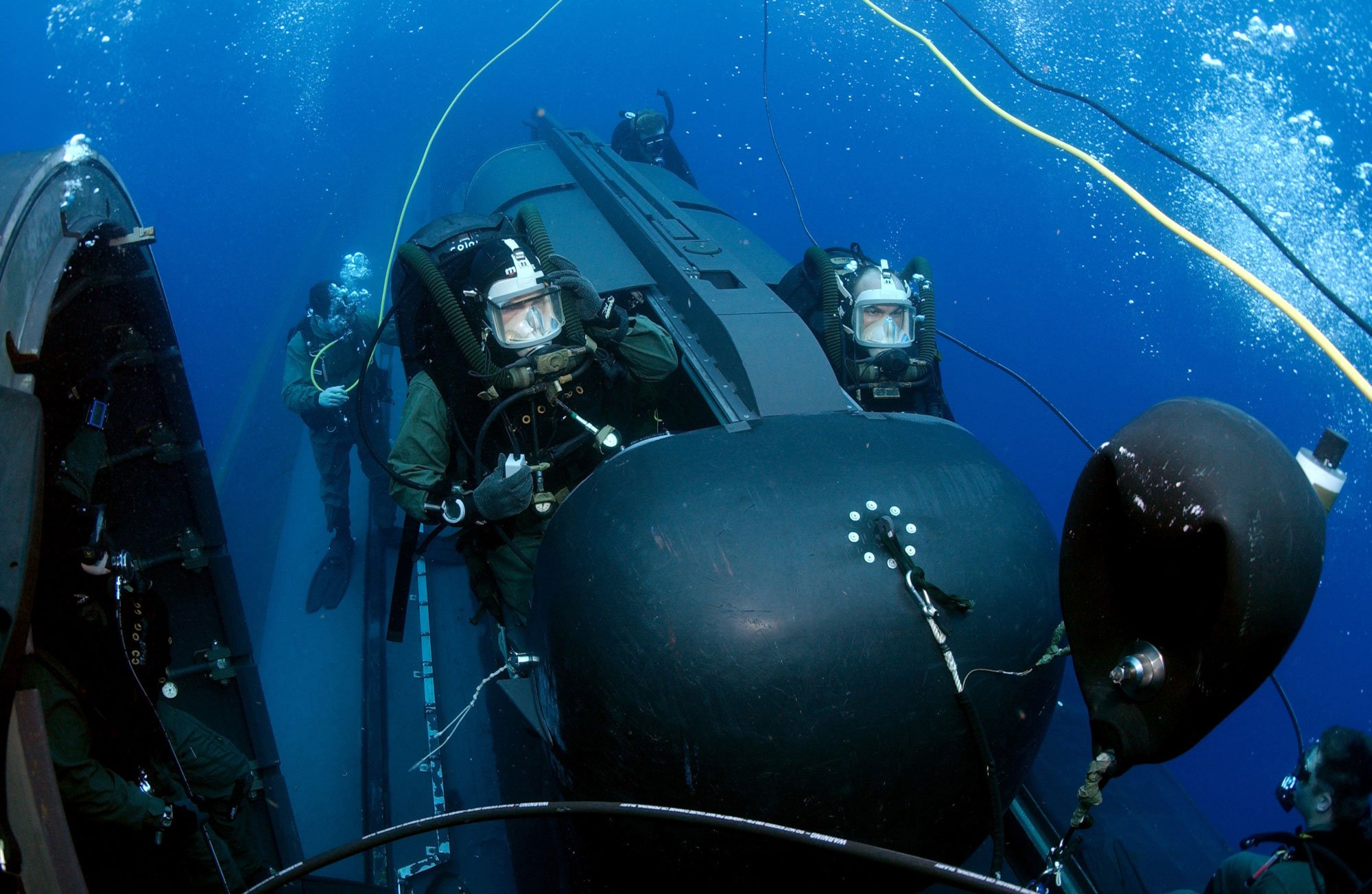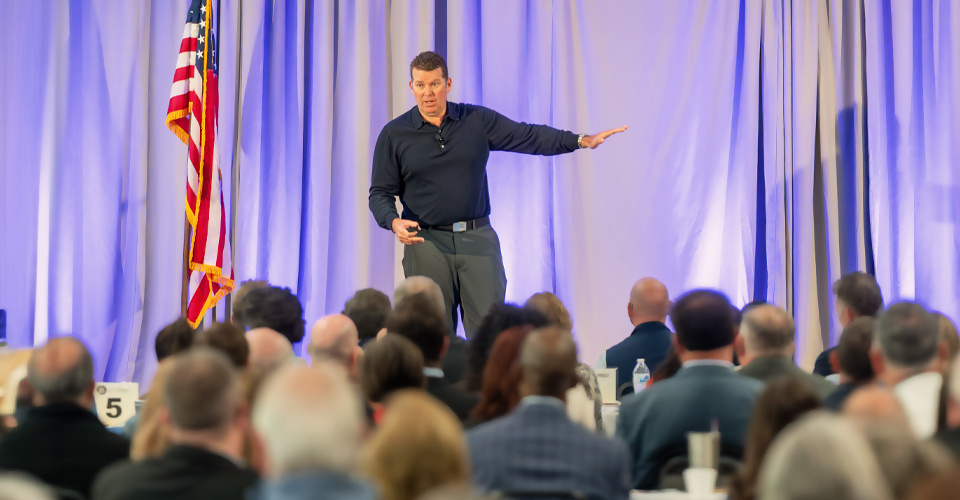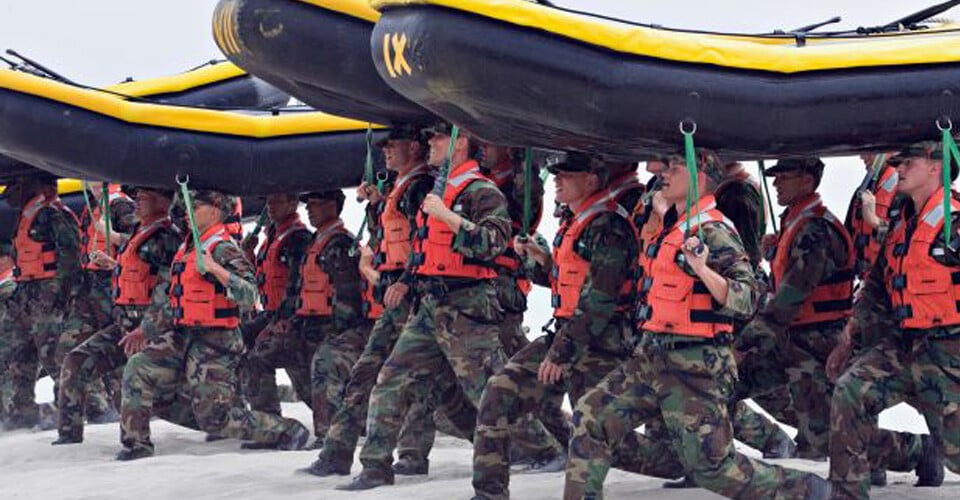A U.S. Navy SEAL Delivery Vehicle (SDV) is a 20-foot-long black tube with a bulbous front end and a large five-bladed propeller at the other end. Over 60% of the space inside the vehicle is taken up by electronic equipment and batteries. The rest of the boxy open space is for up to six Navy SEALs and their gear to be transported up to 32 miles underwater. The black fiberglass that covers the SDV is nothing more than a thin shield against the elements – It doesn’t even keep the water out. The SEALs who ride in this electric sub do so while wearing their own wet suits and special underwater breathing systems that give off no bubbles. This classified combat mini-submersible is designed for the most sensitive SEAL Team missions. Clandestine movement is a priority – avoiding being seen or heard at all costs.
The Most Sophisticated Diving Rigs in a SEAL Team’s Arsenal
To carry out these missions, the pilot and mission commander (my role) sit side-by-side in the front of the sub and use hand signals to keep our noise to a minimal in and around a target area. My left hand rests on his right knee, and I use his knee as if it were the sub’s rudder to indicate the desired direction. Pulling his knee to the right means to steer right until I move his knee back to the center. Tapping the front of his mask means to conduct a tactical peek. Pushing his head down means to dive deep. We have a whole series of these signals for driving, but also have more for dealing with our non-magnetic $60,000 diving rigs that look like “Ghost Busters” packs on our back. Computer controlled semi-closed bubble-less re-breathers – MK 16 dive rigs – are the most sophisticated diving rigs in a SEAL Team’s arsenal, and they give us the ability to go for up to 8 hours underwater.
Obstacle Avoidance Sonar is Only as Good as the Operator
The pilot and I have cramped quarters in the front of the SDV – I’m too big to fit in the front with my fins on, so I have wear them strapped to my shins. In case of an emergency, I’ll definitely be the last man out because it will take time to put on fins and get to the surface. My backup plan is to activate two CO2 cartridges in my life jacket and try to keep my airway and mouth open as I attempt to prevent my lungs from bursting as I rocket to the surface. The majority of my time is spent looking at a 7×9” miniature TV screen that’s constantly out of focus and only displays two colors – black and green. The show I’m watching is our Obstacle Avoidance Sonar, and it’s only as good as the operator can tune it (that’s me).
Re-breather Air Just Doesn’t Have the Same Smell as Fresh Air
My pilot spends his time with both hands between his legs on a knurled aluminum joystick controlling our depth, course and speed. The faster we go, the more dangerous it is – Cruising at 20 feet underwater, you can get an air embolism (popping a lung) by only ascending four feet. At full sub speed, you can ascend four feet in about one second. Without a decompression chamber, your chances of surviving an air embolism are slim, and with a decompression chamber you have only a few hours before there’s no return. Needless to say, the pilot’s main job besides driving us to the target, is getting us there without air bubbles in our bloodstream. It’s so tight in the front that we have to overlap elbows to fit. Our legs are so bent for such long periods that we have to come to the surface to stretch our legs and our cramping abdominal (stomach) muscles. We’ll often take off our full face masks for a minute or two just to enjoy some fresh air – Re-breather air just doesn’t have the same smell as fresh air.
They Look Like Two Pairs of Bobsledders Tucked in for Speed
Meanwhile, the four SEALs in the back of the sub sit “nut to butt” as they face backwards, staring at an aluminum case that houses the electric motor. They look like two pairs of bobsledders tucked in for speed, except this “bobsled” ride will last for over 6 hours and they’ll be hugging each other to stay warm. The only way they can communicate with us in the front is by pulling a cord inside or slamming a sliding door – One slam is “All Okay” and three slams “emergency.” In case of an emergency, their options are even more limited than ours – they must remain inside until the propeller stops. Panicking and leaving too earlier means coming face to face with a four-foot in diameter fast-spinning propeller.
The Hardest Part is the Journey, Not the Destination
Quite often, the hardest part of these clandestine missions is the journey, and not the destination. I’ve lost 15 pounds on a single 12-hour dive; been so cold that I couldn’t move my arms and legs, vomited underwater from being seasick (yes you can get seasick underwater – I now know what it’s like being inside a washing machine!) and had my pilot get so dehydrated that I drove while he rested and hydrated. The entire six-man mini-sub mission is completely dependent on the trust in each individual’s capabilities and actions to keep everyone alive. It doesn’t come down to one SEAL – it’s all the SEALs’ responsibilities to take care of each other. And we’re reminded of that fact as we put on our flight suits over our wetsuits. We wear the same flight suits as our Navy Pilots who fly jets and helicopters – should we get captured our story is that we’re pilots who abandoned our malfunctioning plane.
The Best Teammates in the World
We go to these lengths to protect our mother ship – a nuclear ballistic submarine specially converted to carry our SDV’s garage. On board are over 200 sailors who are counting on us not to give away their position should the unthinkable occur – our capture. On missions, the mini-sub is even rigged with explosives, and we have an operating procedure to destroy our classified underwater ride should our capture be eminent. And yet, every single one of us who performs these missions happily volunteers to do them, because we’re with our teammates – the best teammates in the world.
The Four Essential Actions of High-Performance Leadership
These lessons aren’t exclusive to the Navy SEALs; they are used by successful entrepreneurs, nonprofit leaders, coaches, and sport captains—and now you can master them too. Unstoppable Teams is the handbook for how to build care-based teams that will push people to achieve more than they ever thought possible.





